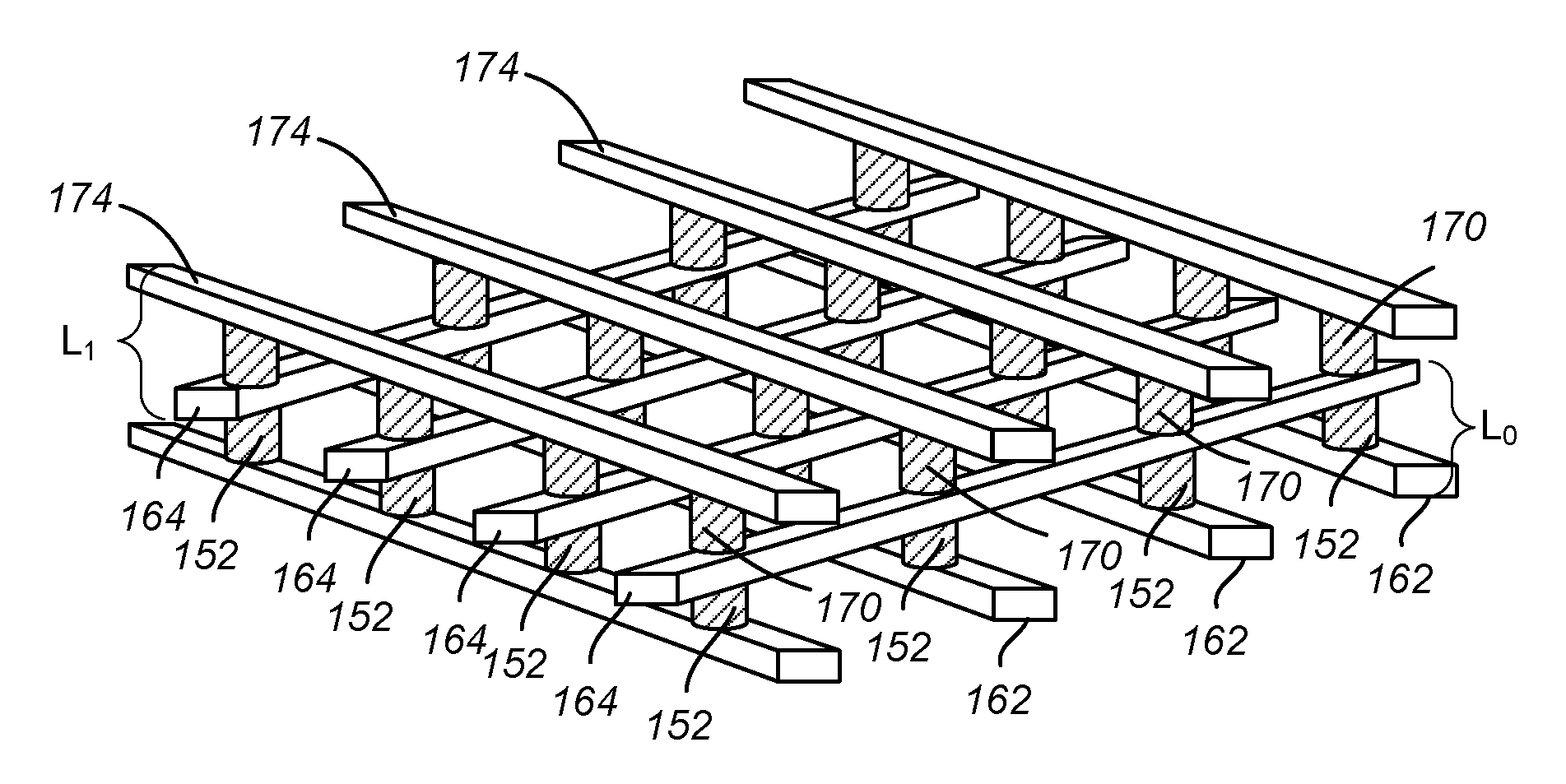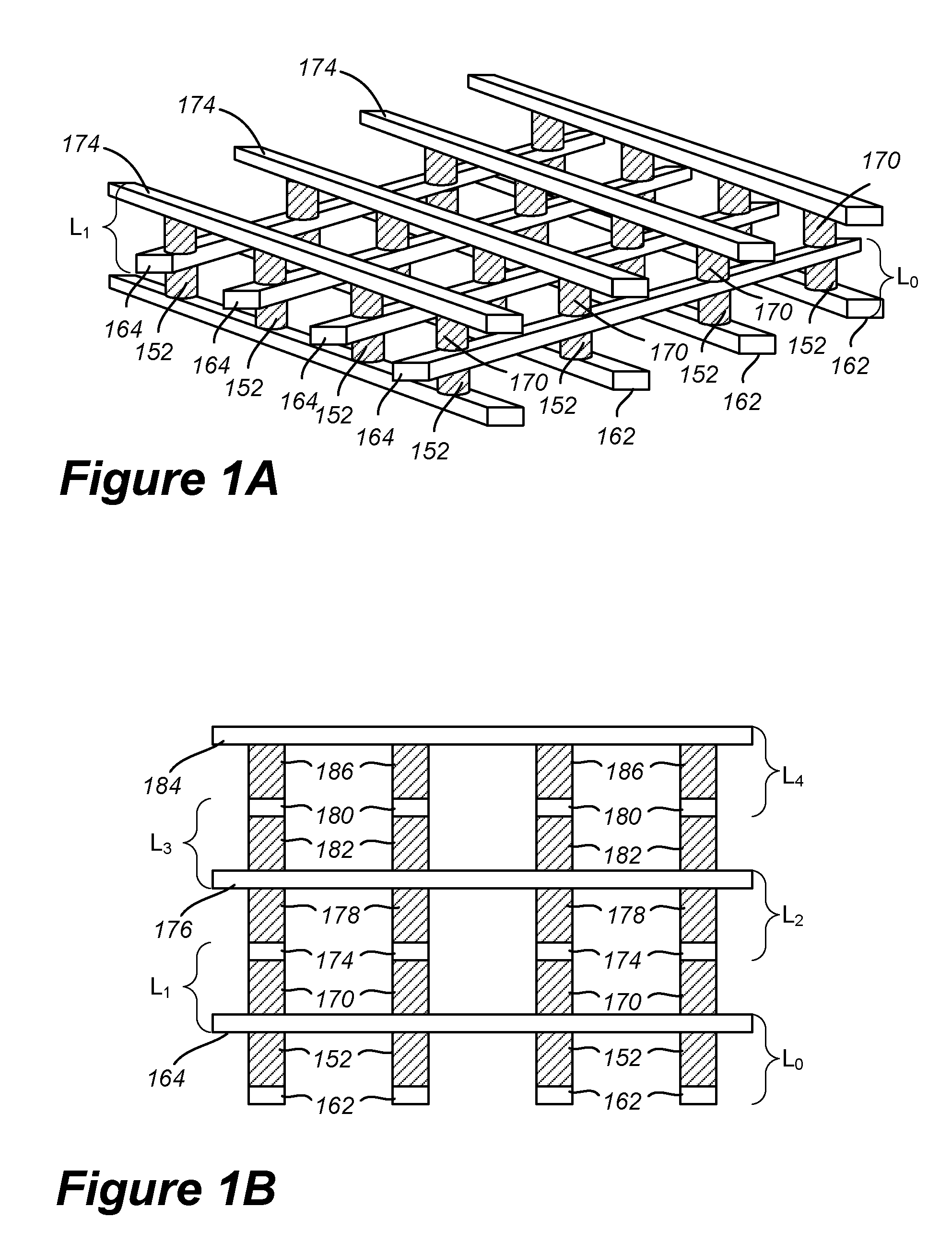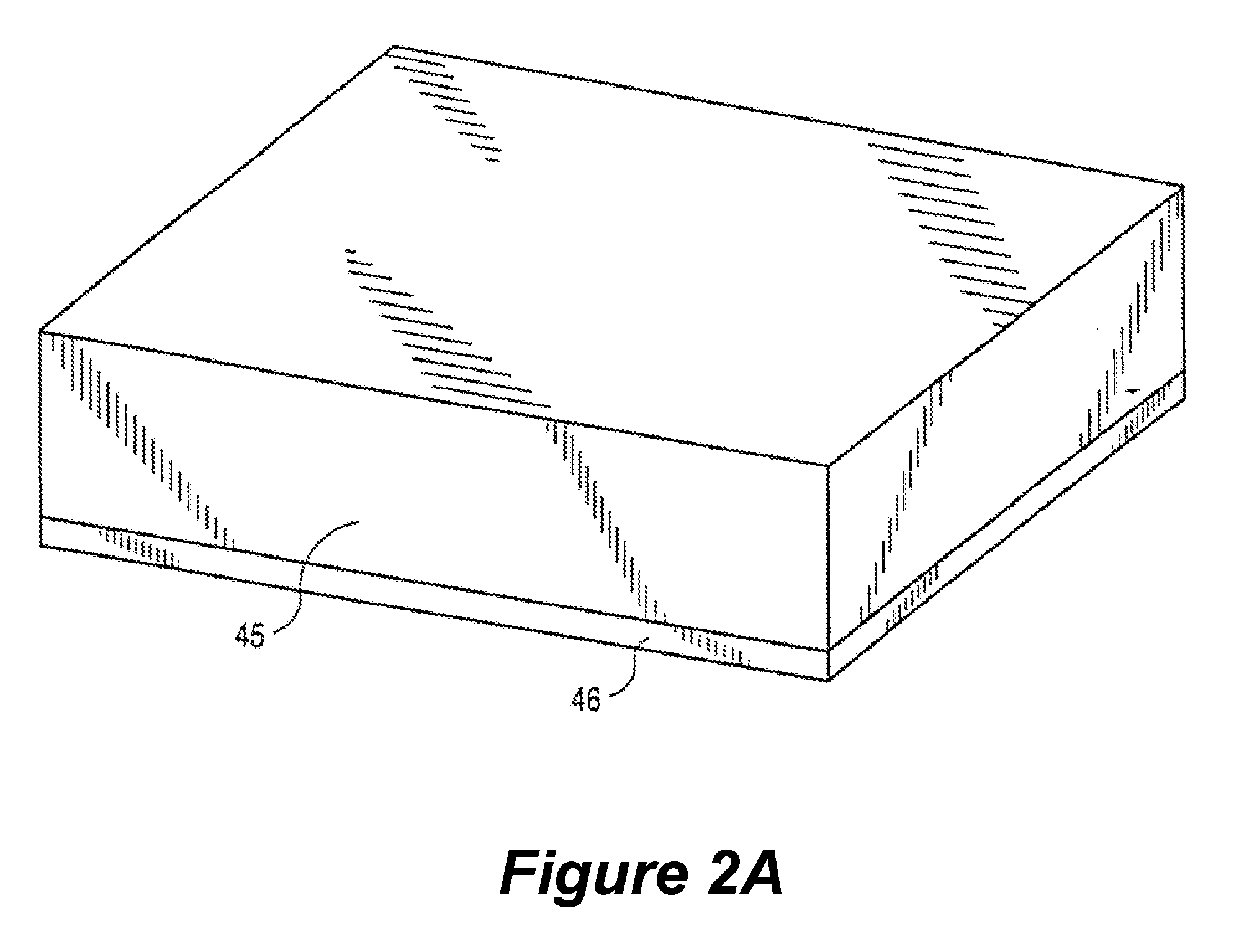Self-Aligned Three-Dimensional Non-Volatile Memory Fabrication
- Summary
- Abstract
- Description
- Claims
- Application Information
AI Technical Summary
Benefits of technology
Problems solved by technology
Method used
Image
Examples
Embodiment Construction
[0032]FIGS. 3A-3H are schematic illustrations of a fabrication sequence for a monolithic non-three-dimensional non-volatile memory array in accordance with one embodiment of the presently disclosed technology. Conceptually, the disclosed technique includes a double etch process in the same direction for each of the conductor layers except the first conductor layer. A semiconductor layer stack and underlying conductor layer are patterned in a first direction (e.g., north-to-south) and etched into strips elongated in a second orthogonal direction (e.g., east-to-west). A second conductor layer is then deposited and patterned in the second direction before forming a second semiconductor layer stack. The second conductor layer is etched into strips elongated in the first direction and the layer stack strips are etched into pillars. A third conductor layer is then deposited, followed by a second semiconductor layer stack. A third pattern is then formed, also in the second direction. The s...
PUM
| Property | Measurement | Unit |
|---|---|---|
| Electrical conductivity | aaaaa | aaaaa |
| Electrical resistance | aaaaa | aaaaa |
| Electrical conductor | aaaaa | aaaaa |
Abstract
Description
Claims
Application Information
 Login to View More
Login to View More - R&D
- Intellectual Property
- Life Sciences
- Materials
- Tech Scout
- Unparalleled Data Quality
- Higher Quality Content
- 60% Fewer Hallucinations
Browse by: Latest US Patents, China's latest patents, Technical Efficacy Thesaurus, Application Domain, Technology Topic, Popular Technical Reports.
© 2025 PatSnap. All rights reserved.Legal|Privacy policy|Modern Slavery Act Transparency Statement|Sitemap|About US| Contact US: help@patsnap.com



